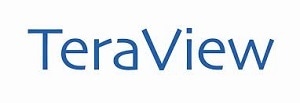Introducing Terahertz Pulsed Imaging™ (or TPI™) – a non-ionizing, pulsed wave that is safer to use than X-ray. With power levels substantially lower than general background terahertz radiation encountered in everyday life, TPITM has the potential for:
- Quicker detection of epithelial tumors
- Reduced morbidity rates
- Lower treatment costs
This technology is presented by TeraView, a company that has nearly 20 years of pioneering experience in the use of terahertz waves in detecting skin and other surface cancers. Terahertz waves are a form of magnetic radiation that are both safe to use as well as non-ionizing, making them an ideal tool for the detection of cancer.
In conjunction with several UK institutions, TeraView has been conducting in vivo trials to detect skin cancer using a terahertz probe. And as per the results of the trials, the probe has good specificity and selectivity. Moreover, the company is also working in the areas of mouth and throat cancers. The preliminary ex-vivo tests were conducted with a unit similar to the TPS Spectra 3000. Further, TeraView has also developed a hand-held probe linking to the same base unit.
.jpg)
To detect differences between healthy and cancerous tissue, TeraView has designed a number of terahertz algorithms. However, since terahertz waves have a limited depth of penetration in the human body, these applications are limited to surface cancers or function solely as an intra-operative probe.
Non-Invasive Molecular Imaging of Epithelial Cancer
The epithelium is the point of origin for over 85% of all cancers. Current medical practice indicates that the gold standard for cancer diagnosis is to conduct an excision biopsy to extract tissue from the body and subsequently examine it under a microscope. This method relies on the extraction of a relatively large amount of tissue. However, with TPI™ technology, this could reduce the amount needed to be extracted, thereby improving conventional biopsy and associated surgery through greater precision in identifying the areas to be excised.
Consequently, this would reduce the number of operations and increase speed of detection and accuracy of diagnosis. As the technology matures, TPI™ is poised to become the sole instrument of biopsies, enabling ‘point of care’ optical biopsy.
A unique feature of TPI™ is its ability to produce high resolution, 3D images. This is facilitated through thick tissue using molecular markers – such as water – to output spectral and absorption data that allows differentiation between cancerous and non-cancerous tissues. Such a procedure is conducted in a non-invasive manner, using non-ionizing radiation, thus making it safer.
TeraView is working tirelessly alongside clinical customers and partners to provide imaging and spectroscopic capabilities from their instrumentation for tissue and disease classification ex-vivo on excised tissue. The company is also actively working with partners to develop in vivo intra-operative probes for tissue conservation surgery and patient endoscopic applications. They have conducted extensive work on skin and basal cell carcinoma, and have recently expanded to clinical work on breast and other types of tissue using these capabilities.
.jpg)
Use of Terahertz as an Intra-Operative Tool during Breast Cancer Surgery
Terahertz waves are powerful because they enable real-time confirmation of cancer tissue elimination, drastically reducing the need for subsequent operations. When a surgeon removes cancerous tissue, they make their best estimate of the location of the diseased tissue. Once removed, the patient’s tissue is then sent to biopsy, where the margins are checked. This means verifying that the tissue is surrounded only by healthy cells. In breast surgery, a check of synaptic nodes may also be routine, again requiring samples to be taken and sent for biopsy.
The biopsy can take anywhere between 2-3 weeks and cannot guarantee to reveal the cancer. In many cases, up to 30% of women are advised to undergo a second operation. By using equipment that can perform this test in real time, this need for recalls can be avoided altogether.
.jpg)
Histology and Terahertz Image Overlay
TeraView has worked extensively with Guys Hospital in London, and proved the efficacy of terahertz waves as an intra-operative tool during breast cancer surgery. This circumvents the biopsy lab and allows the operating surgeon to analyze removed tissue, and then carry out further removals if required. Test results have thus far revealed a specificity of 88-90% and a sensitivity of approximately 72%.
Further in-vivo trials have been undertaken, involving the placement of terahertz probe within the incision to probe for any remaining cancer tissue. TeraView has succeeded in receiving approval by the Medicines and Healthcare products Regulatory Agency (MHRA) to conduct these trials and use Terahertz Pulsed Imaging (TPI™) for (bio)medical research.
Terahertz image of skin cancer
 About TeraView Ltd.
About TeraView Ltd.
TeraView’s patented terahertz technology and instruments can generate, detect and manipulate terahertz radiation to characterise a wide range of materials. Our technology generates spectroscopic information and 3D images using the unique signatures of terahertz light not found at other wavelengths.
Using our TPS Spectra 3000 turn-key system, we have already successfully demonstrated that terahertz spectroscopy has the major advantage of being a non-contact analytical method. It can be applied in the study of semiconductors, pharmaceutical products, medical imaging, novel materials research and non-destructive evaluation of ceramics, composites and more.
Sponsored Content Policy: News-Medical.net publishes articles and related content that may be derived from sources where we have existing commercial relationships, provided such content adds value to the core editorial ethos of News-Medical.Net which is to educate and inform site visitors interested in medical research, science, medical devices and treatments.